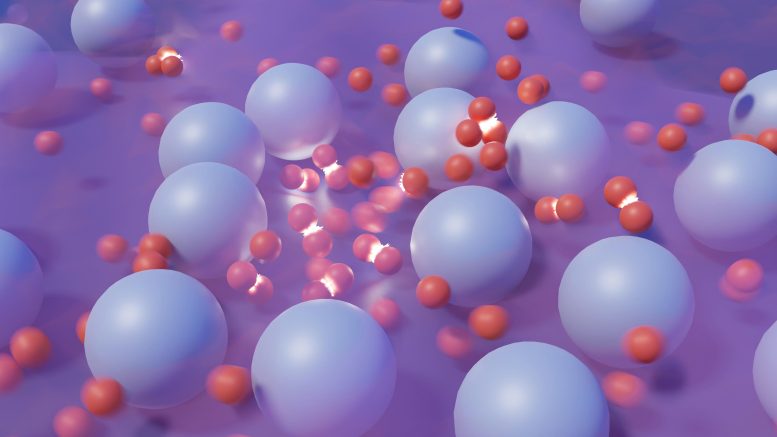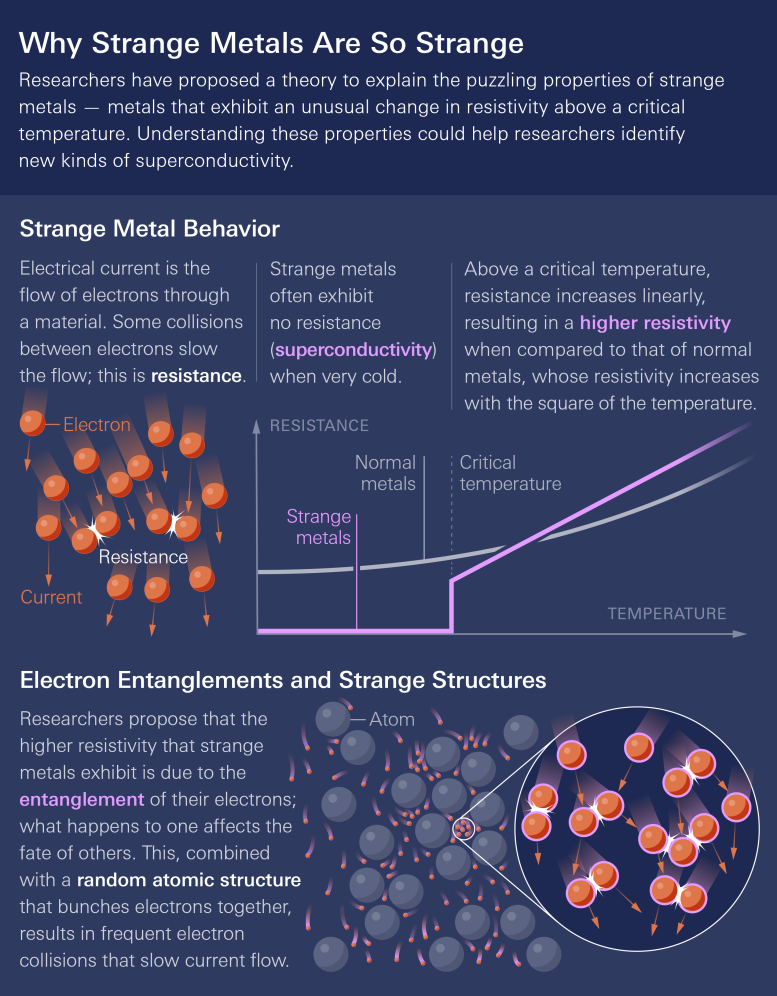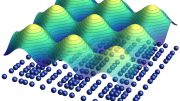
A new theory explains the unusual behavior of strange metals, considered one of the greatest open challenges in condensed matter physics. The theory is based on two properties of strange metals. First, their electrons can become quantum mechanically entangled with one another, binding their fates, and they remain entangled even when distantly separated. Second, strange metals have a nonuniform arrangement of atoms. Credit: Lucy Reading-Ikkanda/Simons Foundation
Recent research led by Aavishkar Patel from the Flatiron Institute has uncovered a mechanism that sheds light on the peculiar behavior of strange metals, one of the greatest open challenges in condensed matter physics.
For close to four decades, ‘strange metals’ have baffled quantum physicists because they don’t adhere to the conventional rules of electricity.
Recent research led by Aavishkar Patel from the Center for Computational Quantum Physics at the Flatiron Institute in New York City has finally unveiled a mechanism that explains the characteristic properties of strange metals.
In the August 18 issue of Science, Patel and his colleagues present their universal theory of why strange metals are so weird — a solution to one of the greatest unsolved problems in condensed matter physics. Strange metal behavior is found in many quantum materials, including some that, with small changes, can become superconductors (materials in which electrons flow with zero resistance at low enough temperatures). That relationship suggests that understanding strange metals could help researchers identify new kinds of superconductivity.
The surprisingly simple new theory explains many oddities about strange metals, such as why the change in electrical resistivity — a measure of how easily electrons can flow through the material as electrical current — is directly proportional to the temperature, even down to extremely low temperatures. That relationship means that a strange metal resists the flow of electrons more than an ordinary metal such as gold or copper at the same temperature.

An infographic explaining a new theory that explains the odd properties of quantum materials known as strange metals. Credit: Lucy Reading-Ikkanda/Simons Foundation
The new theory is based on a combination of two properties of strange metals. First, their electrons can become quantum mechanically entangled with one another, binding their fates, and they remain entangled even when distantly separated. Second, strange metals have a nonuniform, patchwork-like arrangement of atoms.
Neither property alone explains the oddities of strange metals, but taken together, “everything just falls into place,” says Patel, who works as a Flatiron Research Fellow at the CCQ. The irregularity of a strange metal’s atomic layout means that the electron entanglements vary depending on where in the material the entanglement took place. That variety adds randomness to the momentum of the electrons as they move through the material and interact with each other. Instead of all flowing together, the electrons knock each other around in all directions, resulting in electrical resistance. Since the electrons collide more frequently the hotter the material gets, and the electrical resistance rises alongside the temperature.
“This interplay of entanglement and nonuniformity is a new effect; it hadn’t been considered ever before for any material,” Patel says. “In retrospect, it’s an extremely simple thing. For a long time, people were making this whole story of strange metals unnecessarily complicated, and that was just not the right thing to do.”
Patel says that a better understanding of strange metals could help physicists develop and fine-tune new superconductors for applications such as quantum computers.
“There are instances where something wants to go superconducting but doesn’t quite do so, because superconductivity is blocked by another competing state,” he says. “One could ask then if the presence of these nonuniformities can destroy these other states that superconductivity competes with and leave the road open for superconductivity.”
Now that strange metals are a bit less strange, the name might seem less fitting than it once was. “I would like to call them unusual metals at this point, not strange,” Patel says.
Reference: “Universal theory of strange metals from spatially random interactions” by Aavishkar A. Patel, Haoyu Guo, Ilya Esterlis and Subir Sachdev, 17 August 2023, Science.
DOI: 10.1126/science.abq6011
Patel co-authored the new study with Haoyu Guo, Ilya Esterlis and Subir Sachdev of Harvard University.







Do you really understand what quantum states and quantum entanglement are? Do you think using a cat to analogy quantum is scientific? Low dimensional spatiotemporal matter is the foundation of high-dimensional spatiotemporal matter. Topological vortices are point defects in two-dimensional spacetime. Point defects do not only impact the thermodynamic properties, but are also central to kinetic processes. Topological vortices are natural gravitational fields. Understanding how topological vortices interact with each other is more conducive to your scientific understanding of quantum states and quantum entanglement.
If you are really interested in science, you can browse
https://zhuanlan.zhihu.com/p/624024548.
Perhaps, here, your thoughts and soul will be sublimated. Many things that you think are strange are not strange here.